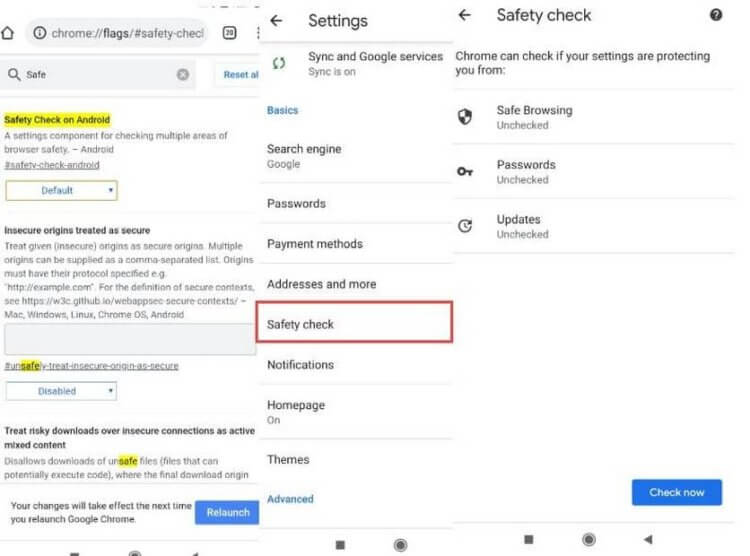Mobile Google Chrome and desktop are two different browsers. Despite the seemingly uniform framework, they differ greatly both in terms of architecture and functionality. For example, the mobile version does not have a built-in antivirus that would scan a smartphone for malware, does not support extensions, and in general does not overload either the processor or the RAM, which is good news. However, Google felt that the differences between mobile and desktop versions of Chrome are too many and need to be addressed.

Mobile and desktop Chrome are very different from each other
Google has planned a large-scale update for mobile Google Chrome, which will be released later this year. It will focus on the security of web surfing and the protection of user data. Google will not invent any new tools, but simply adapt the mechanisms for smartphones that were previously implemented in the desktop version. This should take the browser's security features to a whole new level, allowing it to more aggressively compete with third-party solutions like Apple, Mozilla and Opera.
Google Chrome security features

Google wants Chrome to be more secure for users
There will be three significant innovations in total, which will be combined under the Safety Check package:
- The site check function will analyze the web pages that the user opens and identify fake ones among them. Thus, it will be possible to reduce the risk of theft of user data, who often cannot distinguish the original page from a fake one and voluntarily leak personal information to cybercriminals.
- The password check function will scan the passwords used by the user, calculating among them the hacked and potentially insecure ones. This will avoid situations with the selection of protective combinations and increase the security of accounts, regardless of the service to which they lead.
- The virus check function will not work exactly as it did in the desktop version. It will only analyze sites that the user has opened for spy trackers, malicious scripts and other slag, blocking them if they decide to look for the user's safety.
While the update is in beta testing and the planned innovations can be tested only in a special version of Chrome for preliminary tests – Canary. This is a so-called unstable build because it contains many experimental features that Google is testing to work with before migrating them to the release version of Chrome. It may take several months or even years before this happens. Therefore, even if you see some function in Canary, this does not mean at all that it will appear in the regular version of Chrome.
How to enable experimental Chrome features
However, if you already have Chrome Canary installed, you can activate the above features in just a few steps:
- Open your browser and enter chrome: // flags in the address bar;
- In the window that opens, find the Safety Check function;

Security features can only be enabled in a test version of Chrome
- In the drop-down box under the function select “Enabled”;
- Restart your browser to apply the changes.
Google did not disclose when the security update will be released, but notes that it will be available later this year. Considering that the company generally allowed itself to talk about this, it means that the work on the innovations has already been completed, and now the developers are testing and debugging all the mechanisms to ensure their correct and well-coordinated work. Therefore, I would bet that the update itself with the planned innovations will be released to people even before the end of summer – in late July or early August.
How much the promised innovations will change our experience of using Chrome, I can not judge. On the one hand, I still don't come across phishing links (or maybe I'm just so good at distinguishing them from real ones?), And I haven't come across malicious scripts either. But, on the other hand, there are probably people for whom ensuring their own security is a rather difficult matter, and it is for them that such mechanisms should definitely benefit. True, whether this will make the user an even more greenhouse creature than it is now is a big question.
